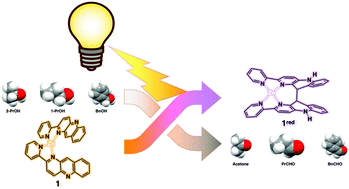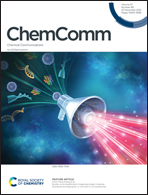An NAD+-type earth-abundant metal complex enabling photo-driven alcohol oxidation†
Abstract
For the first time, an NAD+-type earth-abundant metal complex [Zn(pbn)2(H2O)](ClO4)2 (1) was found to exhibit photo-induced oxidizing ability to convert various primary and secondary alcohols to the corresponding aldehyde and ketone compounds. In addition, a two-electron-reduced Zn(II) complex [Zn(pbnH–pbnH)(ClO4)2] (1red) comprising the novel C–C coupling ligand, obtained by the photo-induced oxidation of alcohols by 1, was successfully isolated and completely characterized. We clarified that the photochemical oxidation of alcohols by 1 to produce 1red proceeds via an electron transfer followed by proton transfer mechanism as elucidated by kinetic analysis on the basis of absorption spectroscopic measurements.

- This article is part of the themed collection: ChemComm Milestones – First Independent Articles


 Please wait while we load your content...
Please wait while we load your content...